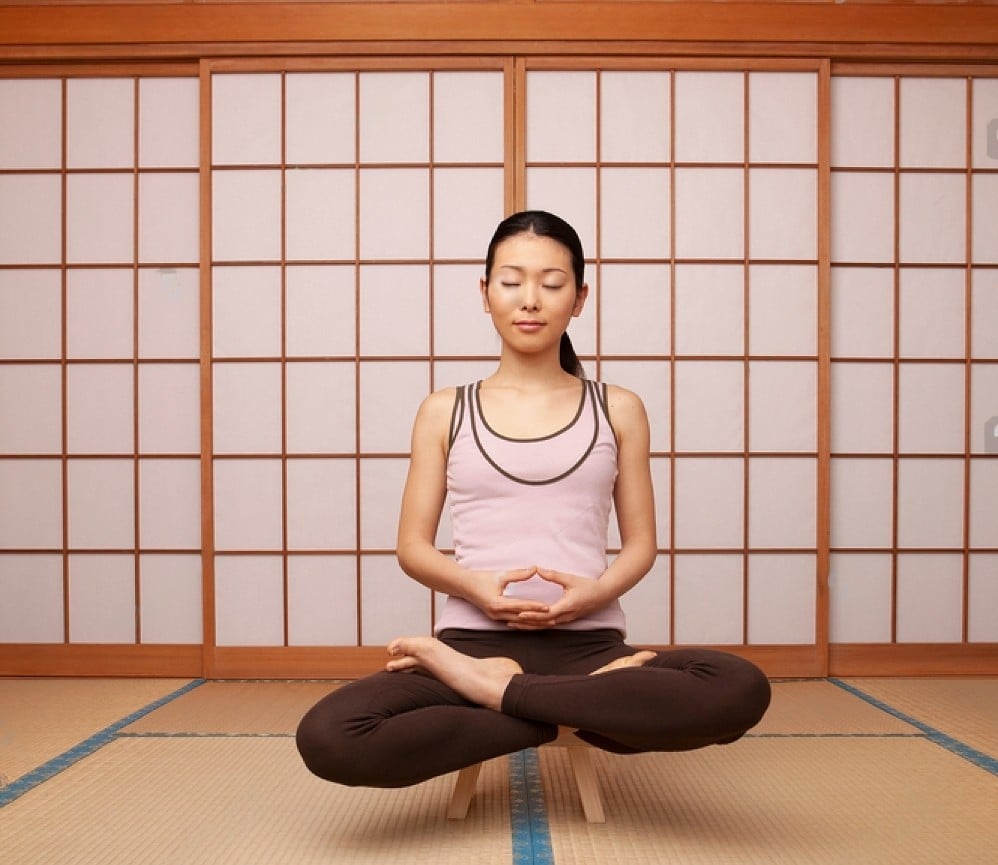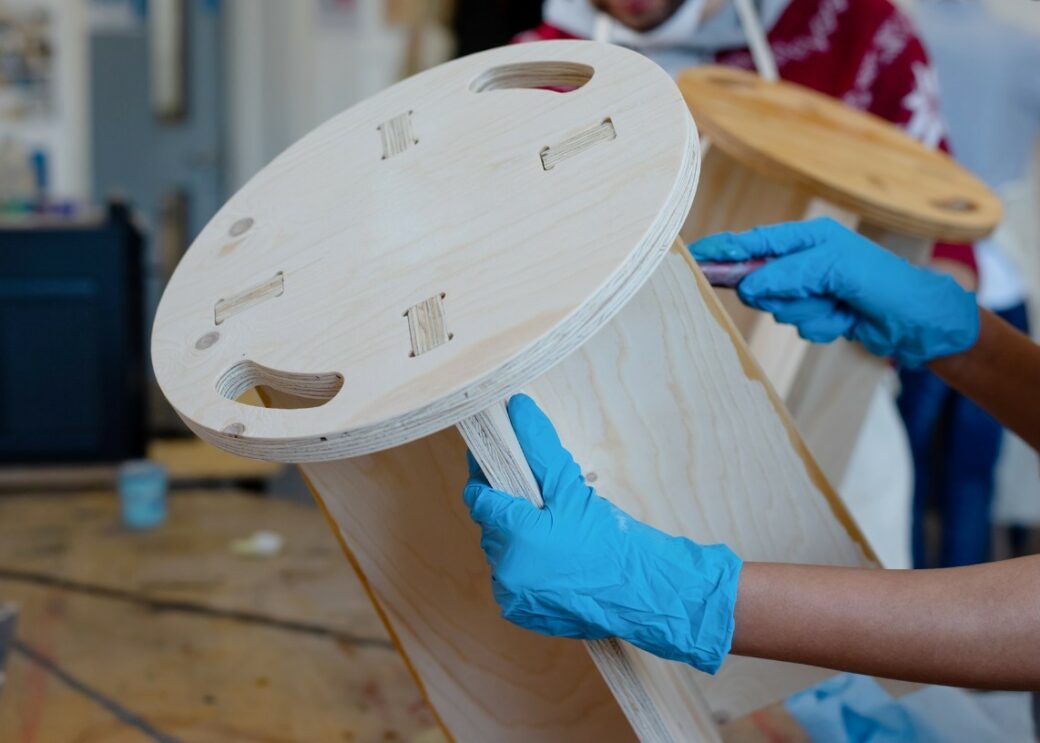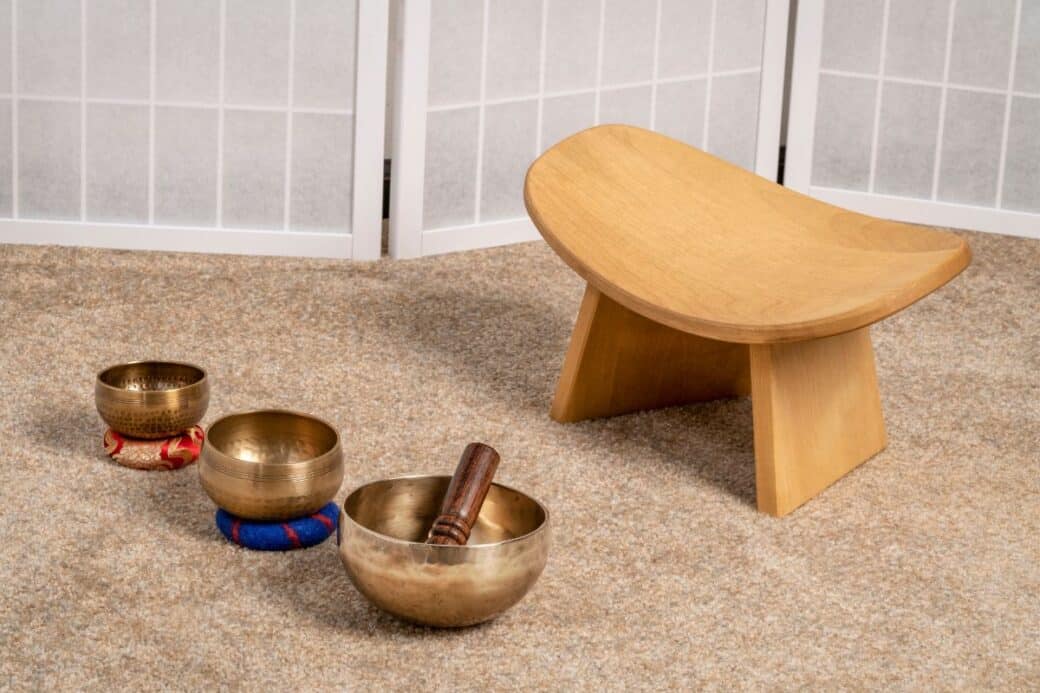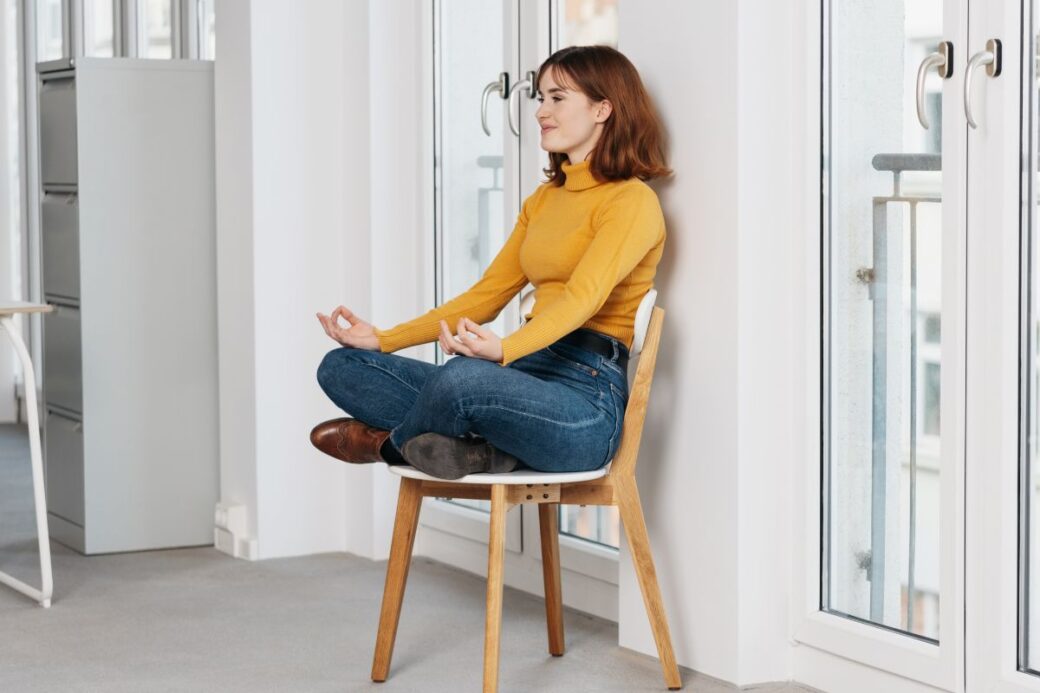Finding the perfect size for your meditation stool can be a game-changer in enhancing your mindfulness practice. Whether you’re a seasoned meditator or someone just starting, the dimensions of your stool can greatly impact your comfort and focus during meditation sessions. In this article, we will explore the importance of finding the ideal size for your meditation stool and how it can help you achieve a deeper state of relaxation and self-discovery. So, let’s dive in and uncover the perfect dimensions for your unique meditation journey.

Meditation Stool Dimensions: Understanding the Importance of Meditation Stool
The role of meditation stools in meditation
When it comes to meditation, finding the right posture is crucial. Meditation stools play a significant role in ensuring that you maintain a comfortable and aligned position throughout your practice. These stools provide support and stability to help you focus on your meditation without distractions. By elevating your body slightly off the ground, meditation stools help promote proper spinal alignment and alleviate stress on the joints. They also aid in reducing strain on the knees and hips, making extended periods of seated meditation more accessible and enjoyable.
How the right meditation stool can enhance your practice
Choosing the right meditation stool can greatly enhance your meditation practice. By providing a stable and comfortable foundation, a well-designed stool can help you maintain a relaxed and alert posture, allowing for deeper and more focused meditation sessions. The ideal stool should support your body in a way that minimizes discomfort and distractions, enabling you to fully immerse yourself in the present moment. With the right stool, you can achieve a sense of balance, both physically and mentally, that is essential for a successful meditation practice.
Furniture and meditation: finding the correlation
The correlation between furniture and meditation may not be immediately apparent, but it is worth exploring. The furniture we use during meditation, such as meditation stools, can significantly impact the way we engage with our practice. Just as a comfortable chair can improve productivity in a workspace, a well-suited meditation stool can enhance the quality of our meditation. By providing the necessary support and comfort, meditation stools become an essential tool in creating a conducive environment for deepening our meditative experiences.
The Basics of Meditation Stool Dimensions
The general dimensions of a meditation stool
Meditation stools come in various shapes and sizes, but they typically share a few common dimensions. The height, width, and depth are the primary dimensions to consider when choosing a meditation stool. The height of a stool is measured from the ground to the top surface, the width refers to the distance between the stool’s sides, and the depth represents the front-to-back measurement. These dimensions vary depending on the style, design, and individual preferences. Understanding the basics of these dimensions is crucial for finding a meditation stool that suits your body and practice.
Understanding measurement units
When discussing meditation stool dimensions, it is essential to have a basic understanding of the measurement units commonly used. Height is typically measured in inches or centimeters, and width and depth can be measured in inches or millimeters. It is recommended to be familiar with both measurement systems to ensure you can accurately compare and select a stool that best fits your needs. Additionally, consider any specific measurements provided by the manufacturer or retailer to ensure precise dimensions when making a purchase.
Importance of appropriate dimensions in a meditation stool
Choosing a meditation stool with appropriate dimensions is vital for maintaining proper posture and comfort during meditation. A stool that is too tall or too short can cause strain on your back, neck, and knees, leading to discomfort and potential injuries. Similarly, a stool that is too narrow or too wide may result in an unstable seating position, affecting your concentration and ability to relax fully. By selecting a stool with the right dimensions, you can create a supportive and comfortable environment for your meditation practice.

Adjusting Meditation Stool Height to Your Body
Determining the right height for your meditation stool
Finding the right height for your meditation stool is crucial for achieving a comfortable and stable seated position. To determine the appropriate height, start by sitting on a cushion or folded blanket while keeping your back straight. Measure the distance from the ground to the point where your sitting bones make contact with the cushion. This measurement will serve as a guide for selecting a stool height that aligns with your body. It is important to note that individual body proportions may vary, so it is essential to try different stool heights to find the most suitable one for you.
How stool height affects meditation
The height of your meditation stool directly impacts your posture and overall experience during meditation. A stool that is too low can cause your knees to be uncomfortably elevated, leading to strain and reduced blood circulation. On the other hand, a stool that is too high can cause your hips to tilt forward, disrupting the alignment of your spine and affecting your stability. By adjusting the height of your meditation stool to align with your body, you can find a comfortable and balanced position that supports deep relaxation and focused meditation.
Adjustable meditation stools and their benefits
If you find it challenging to determine the perfect height for your meditation stool, consider investing in an adjustable stool. Adjustable meditation stools allow you to customize the height according to your body’s needs and preferences. They often come with multiple height settings or are designed to be easily modified with the help of removable parts or extendable legs. Adjustable stools provide flexibility and versatility, allowing you to adapt your meditation practice to different seating positions and accommodate any changes in your body’s requirements over time.
Considering Meditation Stool Width
The ideal width for a meditation stool
The width of your meditation stool plays a significant role in providing both comfort and stability. The ideal width can vary among individuals depending on personal preference, body size, and flexibility. As a general guideline, your stool should be wide enough to support your sitting bones comfortably without feeling cramped. It should also provide enough space to allow for minor shifts in posture without compromising stability. To determine the ideal width for you, consider the width of your hips and thighs and choose a stool that offers ample room for movement and relaxation.
How width contributes to comfort and stability
The width of a meditation stool directly impacts your comfort and stability during meditation. A stool that is too narrow can compress your hips and thighs, leading to discomfort and restricted blood circulation. This can cause distractions and prevent you from entering a deep meditative state. On the other hand, a stool that is too wide may result in an unstable sitting position, making it challenging to maintain proper alignment and focus. By selecting a stool with an appropriate width, you can ensure optimal comfort and stability, allowing for a more rewarding meditation experience.
Width variations in different meditation stool styles
Different meditation stool styles may offer variations in width to cater to individual needs and preferences. Some stools have a wider base, providing additional stability for those who prefer a more grounded seated position. Alternatively, stools with a narrower design may appeal to individuals who prefer a slightly more compact and portable option. Consider experimenting with different stool styles to find the width that best suits your body and meditation practice. Remember, the width of your stool should strike a balance between comfort and stability for an enjoyable and productive meditation session.

Depth of Meditation Stool for Optimal Comfort
The importance of depth in a meditation stool
The depth of a meditation stool refers to the measurement from the front to the back of the seating surface. While often overlooked, depth plays a crucial role in maintaining proper alignment and comfort during meditation. The depth of your stool should allow for a natural curve in your lower back, promoting a relaxed and upright posture. If the stool is too shallow, you may find yourself hunching forward, straining your back, and reducing the effectiveness of your meditation. A stool with an appropriate depth enables you to maintain a balanced and comfortable position throughout your practice.
Balancing comfort and posture with stool depth
Achieving a balance between comfort and posture is essential when considering the depth of your meditation stool. If the stool is too deep, it may cause your pelvis to tilt backward, disrupting the alignment of your spine and leading to discomfort. On the other hand, a stool that is too shallow may force you to sit at an angle, straining your back and hindering relaxation. It is essential to choose a stool with a depth that allows you to sit with a straight and supported spine, providing both comfort and proper alignment for an optimal meditation experience.
Standard depth in meditation stools and exceptions
While there is no definitive standard depth for all meditation stools, many manufacturers design their stools with the average individual in mind. The depth of most meditation stools ranges between 8 to 12 inches. However, it is important to note that these measurements may vary across different stool styles and brands. Additionally, individuals with specific preferences or physical conditions may require exceptions to the standard depth. Consider your body’s unique requirements and experiment with different stool depths to find the most comfortable and supportive option for your personal meditation journey.
Choosing Material for Your Meditation Stool
Various materials used in meditation stool manufacturing
Meditation stools can be made from a variety of materials, each offering its unique characteristics and benefits. Common materials used in the manufacturing of meditation stools include wood, bamboo, metal, and natural fibers such as cotton or hemp. Each material choice gives the stool a distinct look, feel, and durability. Wood is often favored for its natural warmth and sturdiness, while bamboo provides a lightweight and eco-friendly alternative. Metal stools offer a sleek and modern aesthetic, while natural fiber stools provide breathability and comfort. Consider the qualities and aesthetic appeal of different materials when selecting a meditation stool.
The influence of material on stool dimensions
The material used in the construction of a meditation stool can have an impact on its overall dimensions. Wood and bamboo stools tend to have thicker frames, which can affect the width and depth of the seating surface. Metal stools often feature slim profiles, allowing for more compact dimensions. Natural fiber stools may offer more flexibility in terms of cushioning and padding, which can influence the overall dimensions of the stool. When choosing a meditation stool, take into consideration both the material’s aesthetic appeal and its influence on the stool’s dimensions.
Choosing the right material based on weight limits and comfort
In addition to considering the aesthetics and dimensions of a meditation stool, it is crucial to choose a material that provides sufficient support and comfort for your body. Different materials have varying weight limits and responsiveness, which can affect their suitability for individual practitioners. If you require extra support or have a higher body weight, it may be advisable to opt for a stool made from a sturdy material like wood or metal. Conversely, if comfort is your priority, a stool with a padded fabric or cushioned seating surface may be more suitable. Consider your specific needs and preferences when selecting the material for your meditation stool.

Different Styles of Meditation Stools and Their Dimensions
Exploring various styles of meditation stools
Meditation stools come in a range of styles, each offering unique features and benefits. The most common styles include the seiza stool, kneeling stool, and cross-legged stool. The seiza stool, also known as the bench-style stool, allows for a kneeling posture with the legs tucked beneath the stool. The kneeling stool positions the body in a kneeling posture with the legs supported by the stool’s lower frame. The cross-legged stool, often referred to as the zafu or zabuton, provides a raised platform for cross-legged sitting. Each style has its dimensions and specifications, catering to different meditation preferences and physical needs.
How style affects meditation stool dimensions
The style of a meditation stool significantly impacts its overall dimensions and usability. For example, a seiza stool tends to have a longer width and depth to accommodate a kneeling posture comfortably. A kneeling stool, on the other hand, is typically narrower and lower in height to support a kneeling position. Cross-legged stools, depending on their design, can offer various width and depth options to accommodate different sitting positions. When selecting a meditation stool, consider the style that aligns with your preferred posture and offers the most comfortable dimensions for your body.
Choosing a style based on personal preference and physical needs
Selecting the right style of meditation stool is a personal decision based on your individual preferences and physical needs. If you find cross-legged sitting positions, such as the lotus or half-lotus, to be comfortable, a cross-legged stool like Zafu or Zabuton may be the ideal choice. If you prefer a kneeling posture, the seiza or kneeling stool could provide the necessary support and comfort. Experimenting with different styles can help you determine which type of meditation stool best suits your body and enhances your practice. Consider attending meditation classes or seeking guidance from experienced practitioners to get a feel for different meditation stool styles before making a purchase.
Customizing Your Meditation Stool
Options for personalizing your meditation stool
Many meditation stools offer options for personalization and customization, allowing you to modify the dimensions according to your specific needs and preferences. Some manufacturers provide the option to choose from different height, width, and depth settings, ensuring a tailored fit for your body. Additionally, you may have the opportunity to select the material, color, and finish of your stool, allowing you to integrate it seamlessly into your meditation space. Customization options can make your meditation stool feel more personal and aligned with your unique style and requirements.
How customization can alter dimensions
When customizing your meditation stool, it is important to consider how your modifications may affect the stool’s dimensions and overall functionality. For example, choosing a thicker cushion or adding additional padding can impact the height and depth of the seat, potentially requiring adjustments to the height of the stool legs for optimal comfort. Similarly, opting for a wider or narrower seating surface will affect the stool’s width. It is crucial to communicate your customization preferences clearly to the manufacturer or retailer to ensure that the final dimensions of the stool meet your expectations and suit your meditation practice.
Balancing personal style with functional necessity in your stool design
While customization allows you to incorporate your style into your meditation stool, it is essential to strike a balance between aesthetics and functionality. While a particular design may appeal to your aesthetic sensibilities, it’s crucial to ensure that the dimensions and features of the stool align with your ergonomic needs for meditation. Prioritize comfort and proper posture over purely decorative elements to ensure a stool that provides the necessary support and enhances your meditation experience. By finding the perfect balance between personal style and functional necessity, you can create a meditation stool that is uniquely yours.
Additional Features in Meditation Stools
Extra features for comfort and convenience
In addition to the essential dimensions, meditation stools may also offer extra features that enhance comfort and convenience during your practice. Some stools come with built-in storage compartments, allowing you to keep meditation cushions, blankets, or other accessories within easy reach. Others may offer adjustable angles or tilting mechanisms, enabling you to find the most comfortable position for your body. Certain meditation stools also include handles or straps, making them easily portable for meditation sessions outside your home. Consider the additional features that may enhance your meditation experience and choose a stool that offers the right combination of comfort and convenience for your needs.
How these features may affect stool dimensions
While extra features can enhance the functionality of a meditation stool, it is essential to consider how they may affect the stool’s dimensions and overall design. Integrated storage compartments, for example, may require additional space, potentially impacting the width or depth of the stool. Adjustable angles or tilting mechanisms might necessitate mechanisms or parts that affect the stool’s height or stability. Handles or straps could add bulk or change the overall shape of the stool. When evaluating stools with additional features, carefully assess how these features may affect their dimensions and ensure they align with your requirements.
Choosing the right features for your meditation practice
When selecting additional features for your meditation stool, consider your specific meditation practice and personal preferences. If you frequently meditate in different locations, a portable stool with handles or straps may be particularly helpful. If you often require additional support for your meditation accessories, a stool with built-in storage compartments could be a practical solution. Adjustable angles or tilting mechanisms might be beneficial if you prefer to have options for different sitting positions. Assess your unique needs and preferences to determine which features will best complement your meditation practice and enhance your overall experience.
Tips for Choosing the Perfect Meditation Stool Dimensions
Top tips for finding the right meditation stool dimensions
- Consider your body proportions and specific needs when choosing a stool.
- Experiment with different styles, heights, widths, and depths to find the most comfortable fit.
- Seek guidance from experienced practitioners or instructors to understand the optimal dimensions for your body.
- Take accurate measurements and refer to manufacturer or retailer-provided sizing charts for precise selection.
- Prioritize comfort and stability over aesthetics when assessing stool dimensions.
- Consider customization options to tailor the stool to your unique requirements.
- Test the stool before making a final purchase, if possible, to ensure it meets your expectations and supports your meditation practice adequately.
Avoiding common mistakes in selecting meditation stool dimensions
- Avoid choosing a stool solely based on aesthetics without considering its dimensions and functionality.
- Don’t overlook the importance of proper alignment and posture in favor of a stylish design.
- Avoid selecting a stool without considering your body’s specific needs and preferences.
- Don’t hesitate to seek guidance or advice from experienced practitioners to avoid common sizing mistakes.
- Avoid compromising comfort and stability for the sake of fitting within a certain space or aesthetic theme.
- Don’t overlook the potential benefits of adjustable or customizable meditation stools.
- Avoid rushing into a purchase without thoroughly evaluating different options and testing the stool’s dimensions before finalizing the decision.
Making the most of your meditation stool purchase
Investing in a meditation stool is an investment in your meditation practice and personal well-being. To make the most of your purchase, prioritize finding the perfect dimensions that support your body and meditation goals. Consider your unique needs, experiment with different styles and customization options, and seek guidance from experienced practitioners. By selecting a meditation stool with the right dimensions, you can create a conducive environment for deepening your meditation practice. Remember that comfort, stability, and alignment are key, and with the perfect stool, you can invite a sense of calm, focus, and tranquility into your meditation journey.




